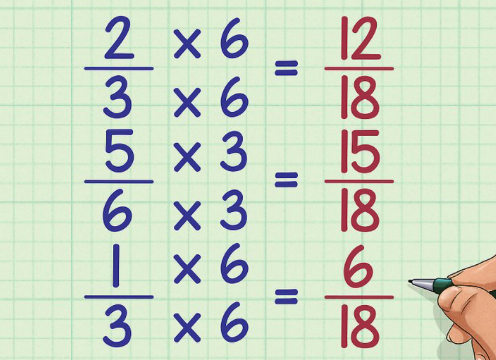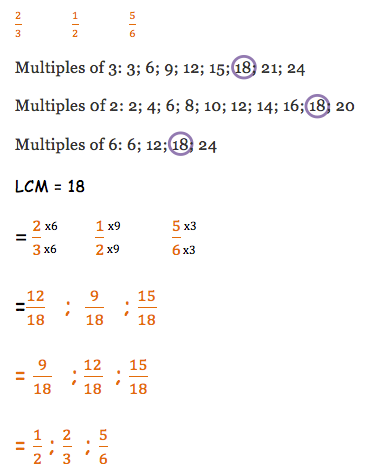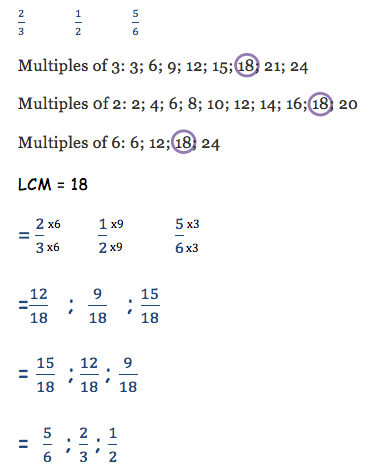Common fractions - Ascending and descending order - Lesson 2
Writing fractions in ascending or descending order
Revising on the lesson of yesterday, we saw that the best and only way to compare fractions is when they are of the same fraction part.
Changing fractions to the equal denominators, we have to calculate the LCM for the denominators given.

Writing fractions in ascending order:
Ascending means from small to big.
Again, learners can use their fraction wall at first just to get use to the idea.
Writing fractions in ascending order without the fraction wall:
Let's take the following fractions as an example:

- We have to get the LCM of the denominators 3 ; 2 and 6.

- The lowest common multiple for the 3 denominators = 18
- This means we have to see what we did with each fraction to get the denominator 18.
- Remember that if we multiply with a number at the bottom, we HAVE to multiply with the same number at the top too. (Repeat this as much as you can)
- Always leave your fractions in the way given. (In simplest form)
Calculations of the whole sum is as follow:

- First arrange the fractions from small to big when they are all on the same denominators.
- After you've arranged them, write them in the way they were given (in simplest form)
Arranging fractions in descending order:
The same example as above is used for arranging fractions in descending order:
You will see that all steps are the same, except for the last part where the fractions are now in order from big to small.

Conclusion:
Make sure all learners understand how to get the LCM.
Tomorrow we will continue with fractions, addition and subtraction.
Calculating the LCM in the next lesson is very important.

Sort: Trending
[-]
steemiteducation (72) 6 years ago
